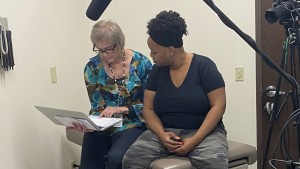View Related Pages
SODOS
Meeting the SODOS is designed as an interactive and experiential simulation grounded in educational theory that teaches both clinical reasoning skills and interprofessional healthcare competencies. This simulation focuses on chronic health diseases using Social Determinants of Health (SDH) and health inequalities that negatively impact communities around the United States. The simulation effectively increases students’ understanding of clinical reasoning, other healthcare professions, improves teamwork collaboration, and refines communication skills.
The simulation is based on an educational model that scaffolds learning from concrete experience and information to assessment and understanding of complex clinical IPE.
The design is an interprofessional education (IPE) clinical progressive simulation that levels the learning playing field for students and has been repeatedly tested in different contexts and piloted at two University campuses (Rosalind Franklin University of Medicine and Science and the University of New England). The educational results are robust and statistically significant, suggesting it can be replicated across programs at RFUMS. Importantly, this is the only interprofessional simulation that we know of that includes and assesses clinical reasoning skills.
This project used the “Four stage model” as the Theoretical Framework to design the educational experience.
Funding
This project was partially grant-funded by a grant received from Elizabeth Shafernich Coulson Award for Innovation in Teaching and Learning.
Batteson, T. J., & Dyer, R. (2022) Meeting the SODOS: An IPE Clinical Reasoning, Teaching and Learning Methodology.($9360.00). Grant received from Elizabeth Shafernich Coulson Award for Innovation in Teaching and Learning.

Simulation Timing and logistics
- Simone
- Daniel
- Flow diagram for Daniel
- SOAP – VS guide
Cases/Videos/EHR/Assessment Materials
- Simone Sodo
- Daniel Sodo
- EHR for Daniel video #1
- EHR for Daniel video #2
- Brief Personal Health Plan for teams 1 and 2, then full group to complete

